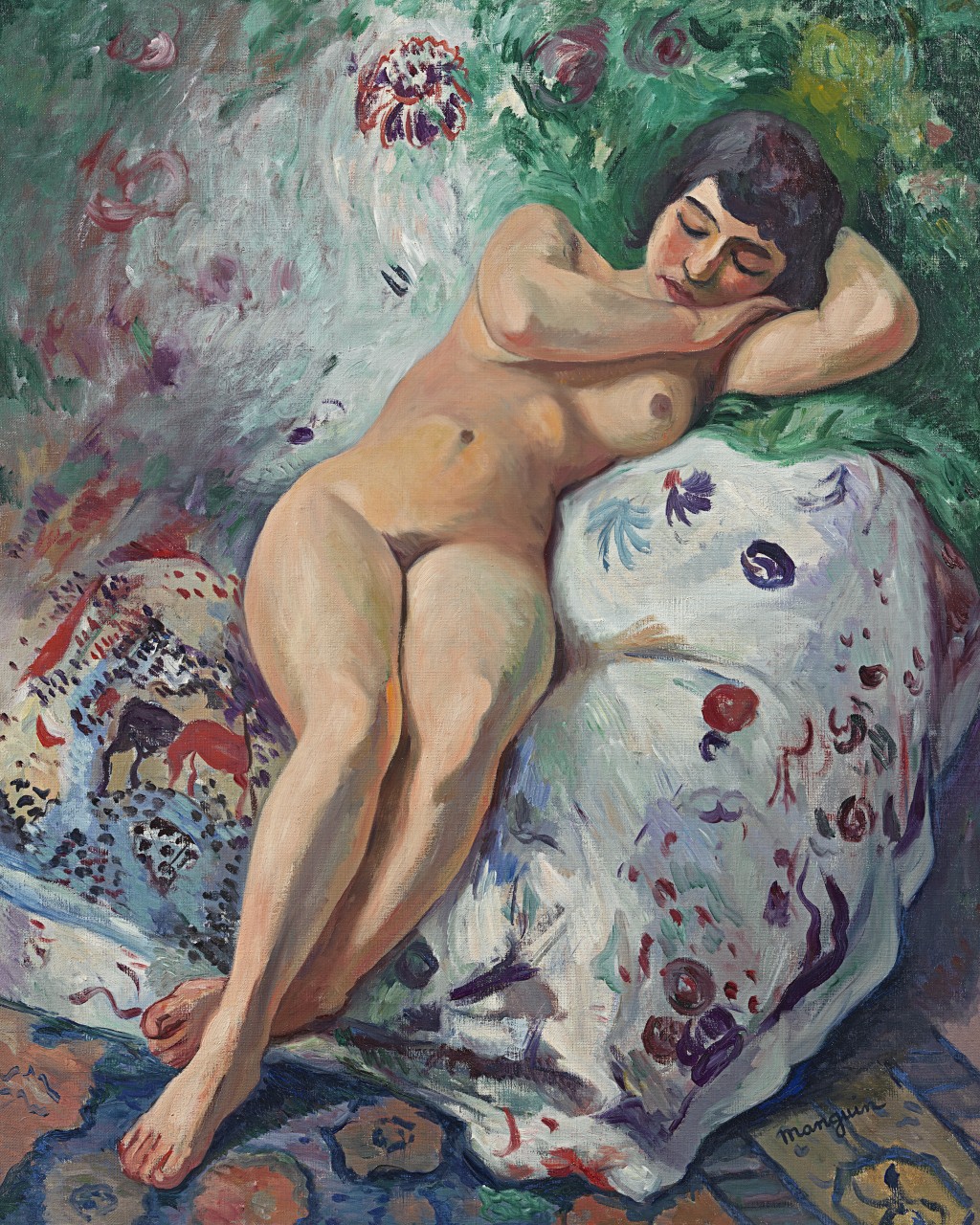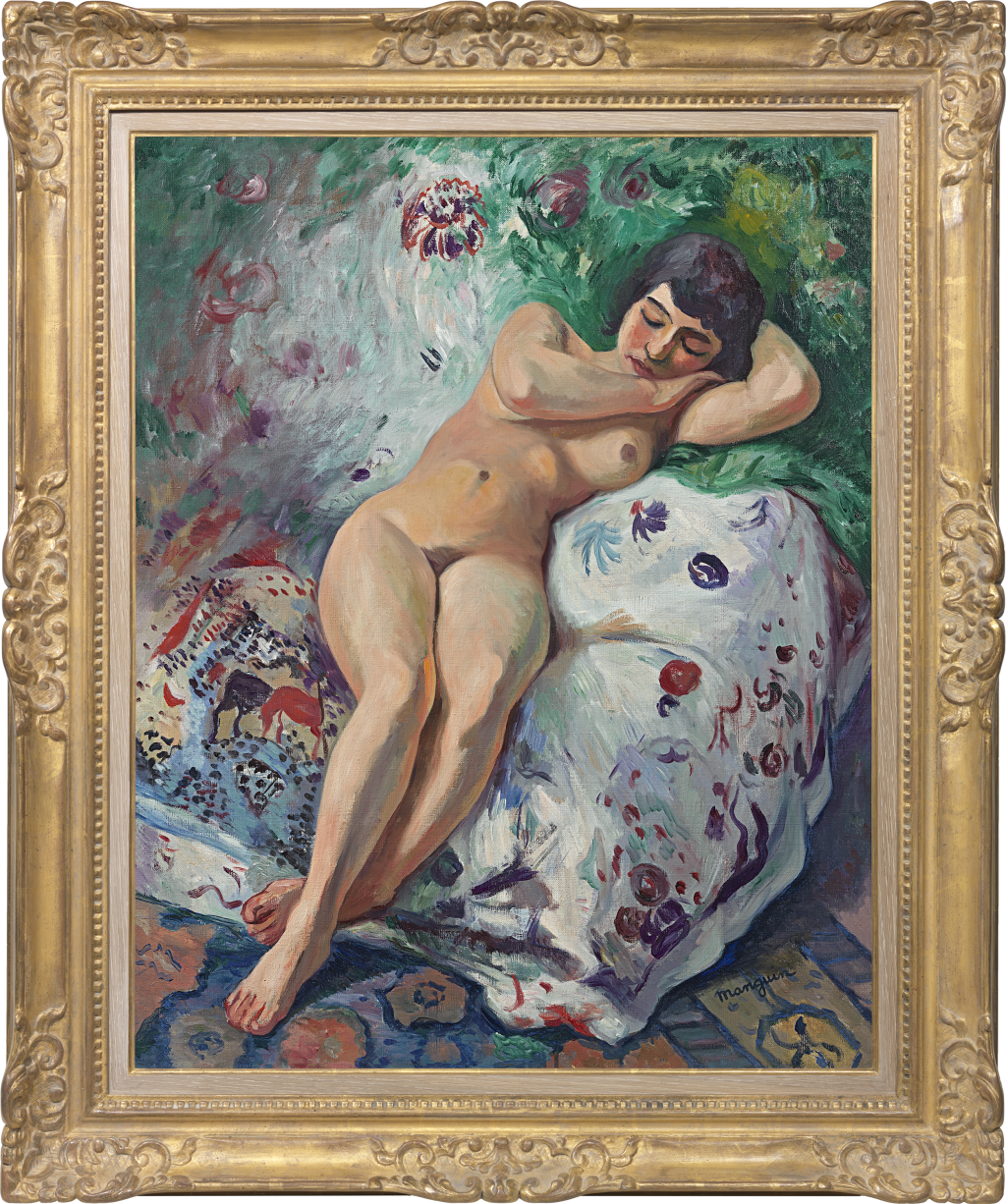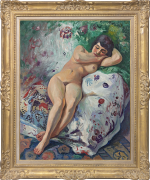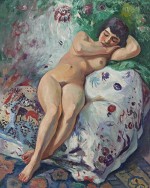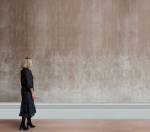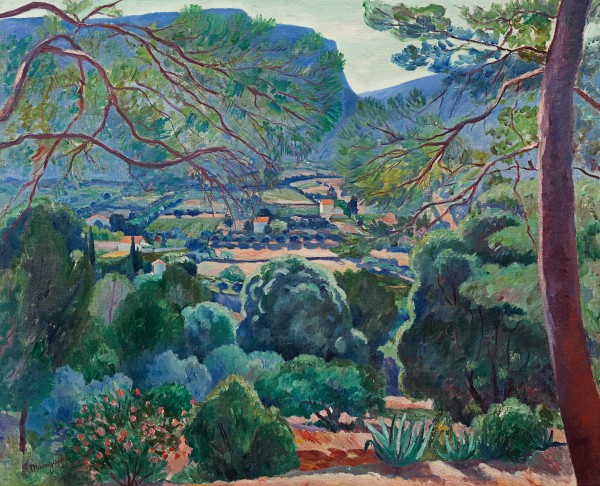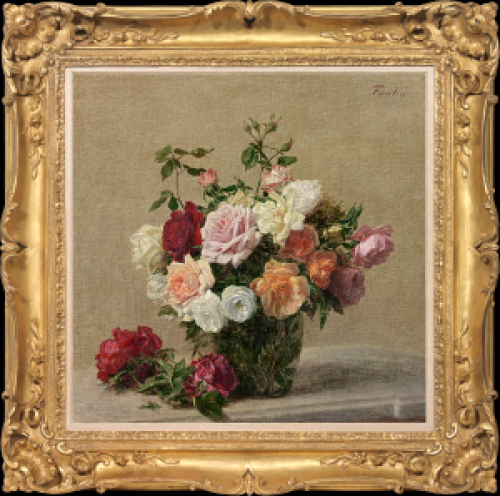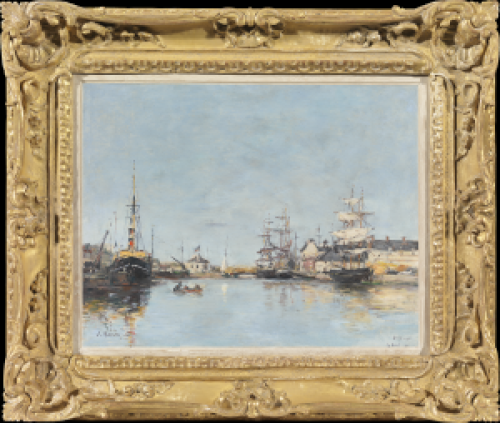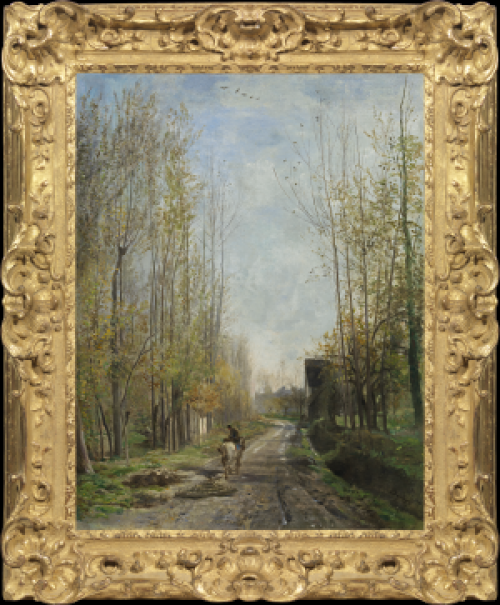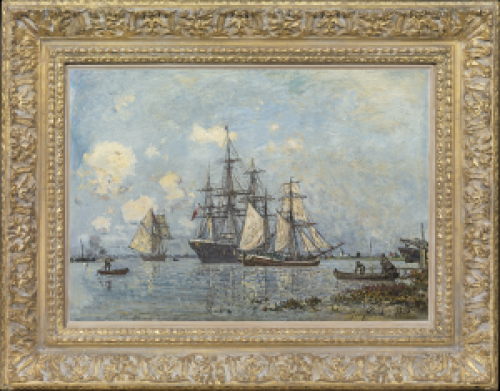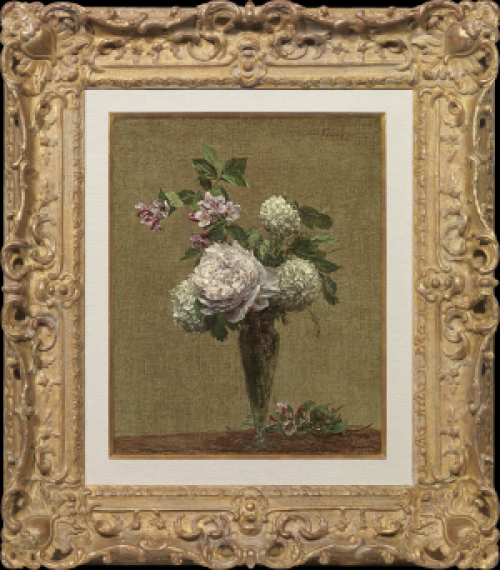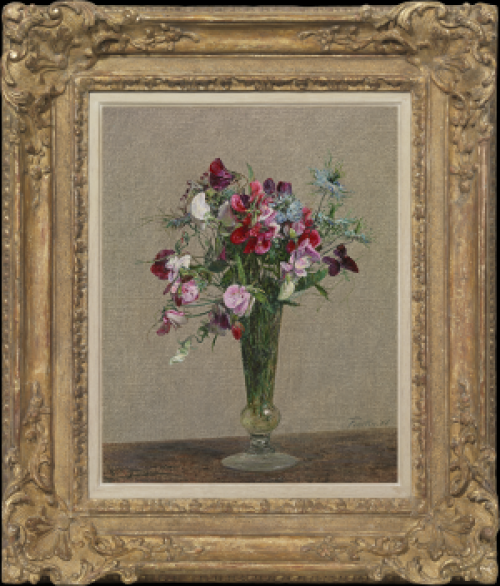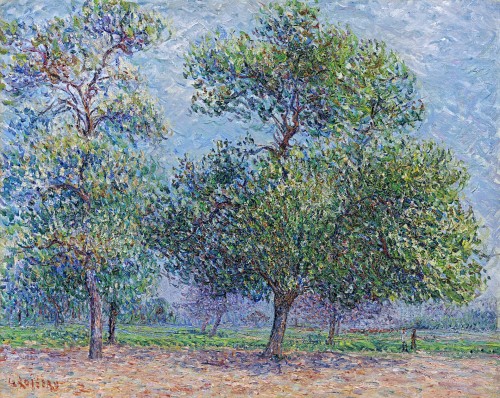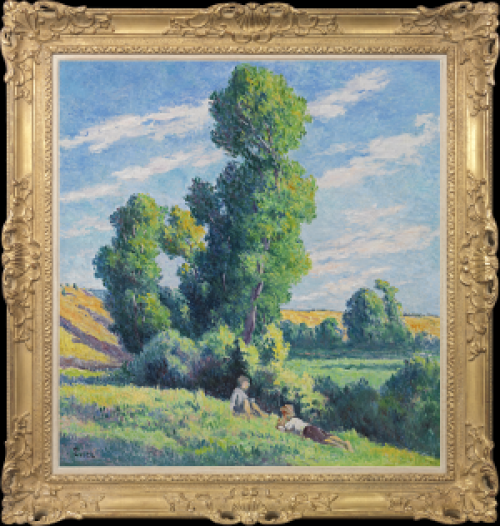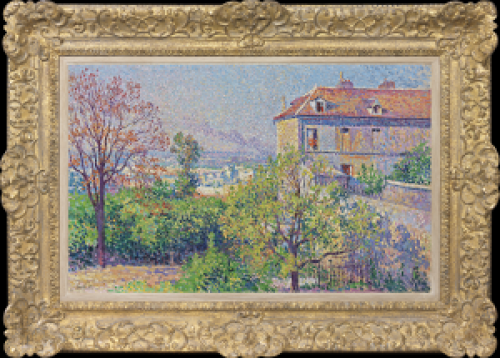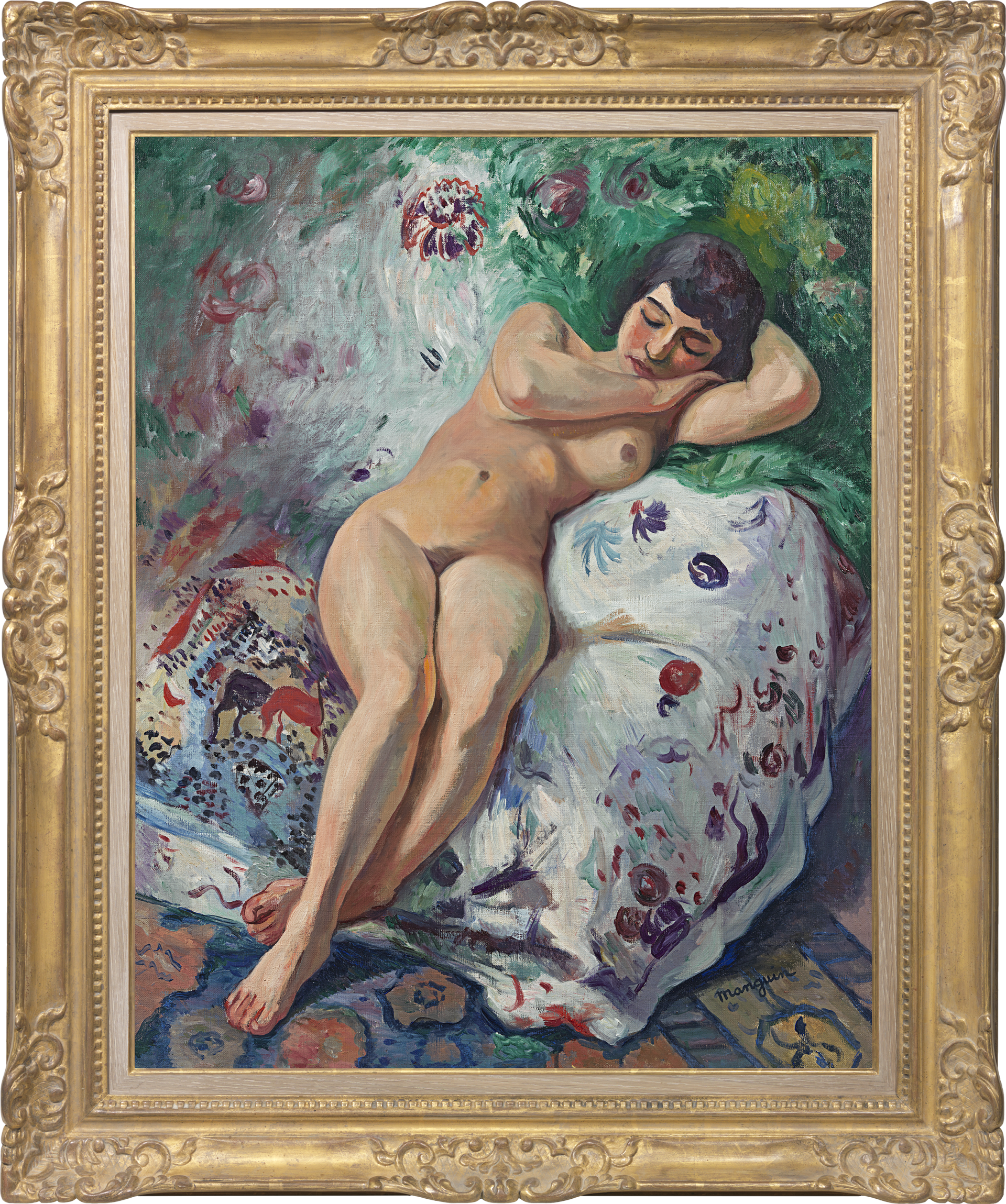HENRI MANGUIN
Paris 1874 - 1949 St Tropez
Ref: CC 173
Femme endormie, petite Marie
Signed lower right: Manguin
Oil on canvas: 36 ¼ x 28 ¾ in / 92.1 x 73 cm
Frame size: 45 ½ x 38 in / 115.6 x 96.5 cm
Painted in Manguin's studio in Rue Saint-James, Neuilly in 1911
Provenance:
E Druet, Paris, April 1912, inv. no.6904
Alfred Hahnloser, Winterthur, Switzerland
Mrs E Druet, Paris, 1927;
From whom acquired in 1938 by a private collector, France;
by descent
Literature:
Marie-Caroline Sainsaulieu, Henri Manguin Catalogue Raisonné de l’Oeuvre Peint sous la Direction de Lucile et Claude Manguin, Neuchâtel 1980, p.156, no.379, illus.
Henri Manguin was a pupil with Matisse, Marquet, Rouault and Camoin in the studio of Gustave Moreau, a liberal teacher who sensed the ferment of originality in these young men: he told them that he was the bridge over which they would pass. They sprang to notoriety at the 1905 Salon d’Automne, with paintings in which vivid, anti-naturalistic colour is used as a vehicle to express emotion. Perspective, paramount since the Renaissance, was jettisoned in favour of eddying black lines and a pulsating picture plane. The outraged critic Louis Vauxcelles dubbed these artists ‘Fauves’ (wild beasts). Manguin’s daughter Lucile described her father as ‘homme sensible, cultivé, passionné…aussi habité d’une grande energie’. Charles Terrasse, nephew of his friend Pierre Bonnard, commented: ‘Manguin, c’était une contraste de force quasi agressive et d’affabilité…Il colerait ou riait; il était tout en extreme comme un Fauve généreux’[1].
Manguin explored the subject of the female nude throughout his career, as did his friend Henri Matisse. Femme endormie, petite Marie, painted in his studio in Neuilly in 1911, presents a favourite model with delicate, touching sensuality. The smoothly simplified line of Marie’s figure, with its subtle play of light, is placed in the vibrant setting of the studio furnishings, a divan covered with an oriental embroidery which gives her the air of an odalisque. Manguin draws on a long tradition of painting the female nude in French art, from the playful nakedness of Boucher, to the odalisques of Ingres, to Manet’s notorious Olympia, Degas’s domestic nudes, and the joyous, pagan sensuality of Renoir’s nude compositions, which Manguin much admired.
This painting was formerly in the collection of one of Manguin’s most important patrons, the Swiss ophthalmologist Alfred Hahnloser, whom he had met through his friend, the Lausanne-born, Paris-based artist Félix Vallotton (1865-1925). Part of a circle of collectors of French avant-garde painting, Hahnloser and his wife Hedy were influential in the dissemination of his work among several other Swiss collectors. Manguin had stayed with the Hahnlosers at Winterthur in 1910 and they visited him in Neuilly the same year.
HENRI MANGUIN
Paris 1874 – 1949 St Tropez
Henri Manguin was born in Paris in 1874. In 1894 he entered the studio of Gustave Moreau at the Ecole des Beaux-Arts, a fellow pupil of Matisse, Marquet, Rouault, Valtat and Camoin, who remained lifelong friends. In 1899 he married his muse and model Jeanne Carette and in 1902 exhibited for the first time at the Salon des Indépendents. Manguin first discovered the South of France in 1904, when he was invited to Saint-Tropez by Paul Signac, with whom he shared a love of fast cars. The dazzling Mediterranean light had a profound effect on Manguin’s work. Manguin and his friends showed paintings with emotionally-charged, anti-naturalistic colour and shifting perspective at the 1905 Salon d’Automne, provoking the critic Louis Vauxcelles to dub them ‘fauves’ (wild beasts). The following year Ambroise Vollard bought 150 of Manguin’s works.
Manguin depicted nudes, landscapes, interior scenes and still lifes in a direct, painterly style, although the palette of his later work is softer and more naturalistic than that of his Fauve period. From the 1920s, like Matisse, he divided his time between Neuilly-sur-Seine to the west of Paris and the South of France, renting, then buying, a house called l’Oustalet at Saint-Tropez. Manguin also made painting trips to Normandy, Brittany and other parts of France and to Switzerland, where he gained important patrons through his friendship with Félix Vallottan. Manguin died at Saint-Tropez in 1949. In 1950 the Salon des Indépendents organized a major retrospective of his work.
The work of Henri Manguin is represented in the Musée d’Orsay, Paris; the Hermitage, St Petersburg; the Museo Thyssen-Bornemisza, Madrid; the Metropolitan Museum of Art, New York and the Art Institute of Chicago.
[1] Lucile Manguin, ‘Henri Manguin, mon père’, in Paris, Musée Marmottan, Henri Manguin 1874-1949, 19th October 1988-8th January 1989, p.19.


